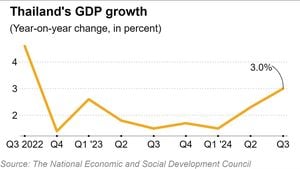Belarus has recently staged military exercises near its border with Poland, intensifying regional tensions amid growing concerns over the security situation. This development follows incidents leading to increased scrutiny over Belarusian military posturing, as many analysts believe it signals possible aggression.
On the eve of these exercises, there have been notable shifts within the geopolitical sphere. According to Belarusian military officials, the drills are intended to bolster the readiness of their armed forces, demonstrating their capability to respond to perceived threats. The situation on the Poland-Belarus border has been particularly volatile, with accusations from Poland and other neighboring countries about increased migrant flows and military activities.
Reports mention significant troop movements, strategic deployments, and the use of heavy artillery as key components of the Belarusian military maneuvers. These exercises come at a time when NATO is vigilant, raising alarms over what some view as Belarus' attempts to test the waters concerning military engagement with the West.
"The objectives of these drills are clear; they serve both as a deterrent against perceived threats and as preparation for possible future confrontations," stated Colonel Alexander Koval, commander of the Belarusian armed forces. This clear message from the military leadership has been perceived as a show of defiance, primarily aimed at Western states.
Poland has responded firmly to these military exercises. The Polish government, citing national security concerns, has ramped up its own military readiness. Poland has reinforced its border units, positioning additional troops and advanced weaponry to deter any aggressive actions. Polish Defense Minister Mariusz Błaszczak indicated, "We are fully prepared for any situation, and we will not allow any destabilizing actions on our border."
The geopolitical backdrop of these exercises is underscored by Belarus' increasingly fraught relationship with NATO. Following the 2020 presidential elections, which were widely regarded as fraudulent, Belarus has faced significant domestic unrest and international sanctions. This isolation has forced Belarusian President Alexander Lukashenko closer to Moscow, heightening concerns over Belarus being used as a proxy by Russia as tensions with NATO escalate.
Experts highlight the multifaceted nature of these exercises. They reflect not only military capability but also the political messaging intended for both domestic and international audiences. The timing is deliberate, coinciding with NATO's annual summit where member states discuss collective security challenges.
Besides the immediate military ramifications, these drills could have far-reaching consequences for regional stability. NATO leaders have been closely monitoring the situation and plan to respond with strategic initiatives to reinforce their eastern flank. A NATO spokesperson noted, "Our commitment to collective defense remains unwavering, and any hostile actions from Belarus will be met with appropriate responses."
International responses have varied, with some nations echoing concerns about the potential for escalation. The European Union has reiterated solidarity with Poland and the Baltic states, emphasizing the importance of maintaining peace and stability within the region. EU officials are advocating for diplomatic solutions but acknowledge the necessity of preparedness to face aggressive maneuvers from Belarus.
The situation remains precarious. Continued military exercises by Belarus, coupled with the heightened rhetoric and visible troop movements, paint a complex picture of Eastern European security. Tensions along the Poland-Belarus border not only raise alarms for the immediate actors involved but also spotlight broader geopolitical contests.
Analysts warn of the potential for military miscalculation, emphasizing the need for dialogue and de-escalation measures to prevent conflict. Polish officials remain committed to monitoring the situation closely, reinforcing border security and maintaining communications with NATO on threat assessments.
The coming weeks will be pivotal as the dynamics of Eastern Europe take shape against this backdrop of military readiness and political maneuvering. Further developments will likely influence the broader strategic calculus for both NATO and Belarus, as all parties seek to navigate this tense period.



